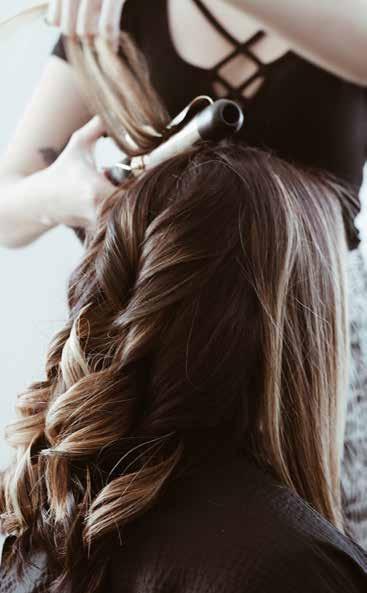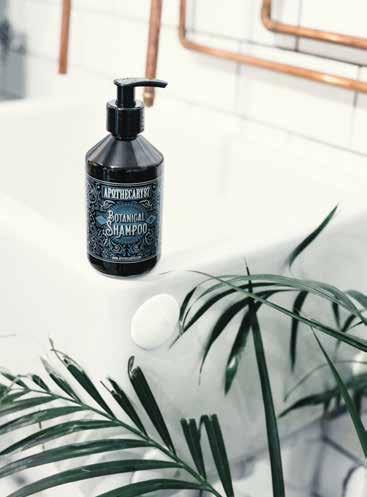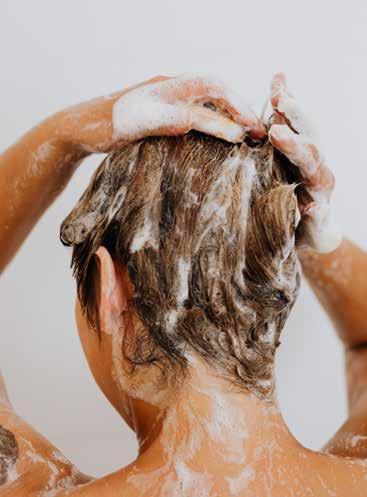
3 minute read
HEAL YOUR HAIR
Our hair goes through so much each day, with natural elements and artificial styling and heating taking their toll. Melissa Nazareth lists some soothing hair care practices to repair and nourish your mane.
Hair colour, treatments and styling are such an integral part of our daily life. Sometimes, it’s unavoidable because you may have a major family event or even a work meeting – one’s got to look presentable! Additionally, natural aggressors such as strong sunlight can cause damage. Further, many of us unknowingly follow harmful practices such as sleeping with wet hair, using low-quality products or regular teasing and backcombing. In the long run, the cumulative effect of these factors shows; your hair may get frizzy, break easily or you may experience acute hair fall. While you can’t reverse the damage overnight, these hair care habits will restore balance over time.
Advertisement

Food For Fabulous Hair
Your diet goes a long way toward affecting how healthy your hair is. Include foods rich in nutrients such as protein, biotin, vitamins A, B, C and E, minerals, zinc and iron. Some foods you can make a part of your daily life are eggs, oily fish such as salmon, fresh fruit and vegetables such as avocado, berries, carrots and spinach, nuts and seeds, and whole grains. They not only promote hair growth but also reduce hair fall. Additionally, they improve hair quality, making it shinier. While it’s ideal to eat a balanced diet daily, it’s not always practical. Many have a tendency to skip breakfast, especially on busy days, or indulge in a cheat meal over the weekend. A good idea is to consult your dietician or physician who might suggest supplementing your diet with vitamin tablets.
Sip Away
Your water intake is equally important. During winter, we normally tend to feel a lot less thirsty. That doesn’t mean the body doesn’t need the fluids. Cultivate the habit of hydrating every hour or so throughout the day. Perhaps, buy a fun bottle with markings to keep you motivated. There are several benefits: water flushes out toxins, ensuring the pores in your scalp aren’t clogged. Further, it moisturises your scalp and hair. Goodbye, dry, itchy scalp! Hydrating also improves elasticity, reducing breakage and subsequent thinning. If you find plain water boring, try infusing it with lemon, cucumber slices or mint leaves. Remember, coffee, tea and juices are not substitutes for water.
Hair Spa At Home
It’s important to follow a consistent hair care routine. As a rule, oil your hair at least once a week. While coconut oil is considered one of the best, other options you could explore include almond, onion seed, argan and herbal. However, ensure they’re organic and not commercialised, chemical-based products. Wash your hair regularly, but don’t overdo it. Generally, about twice or three times a week for normal hair is ideal. Your dermatologist can guide you, depending on your hair and scalp type. When you wash your hair, scrub gently, so you don’t damage your roots; don’t scrub the hair shaft or length of your hair. The foam that’s produced will automatically cleanse it. Conditioning your hair is an important step. If you have dry hair, a leave-in conditioner is a good complement; the difference is you don’t rinse out the latter, locking in moisture and nutrients. It’s best to air dry your hair but if you must use hot tools, never forget the heat protectant. Using hair masks once or twice a week is a great solution for those who require deeper conditioning and hydration. Invest in sunscreen for your hair and scalp – you need it in winter too.


Tool Talk
Daily use of brushes and combs, hair towels and styling and hot tools greatly influences your hair’s condition. Natural wooden or bamboo brushes and combs massage and stimulate your scalp, increasing blood flow and sebum production. Further, they cause the least damage and breakage; use a bristle size suited to the thickness of your hair. Always use a wide-toothed comb to get rid of knots or evenly distribute conditioner in the shower; detangling brushes are an alternative for knots. Invest in premium quality hot tools such as straighteners and curlers, and avoid very high temperatures – no more than 200 degrees Celsius. Wherever possible, switch to heatless styling; curling headbands have revolutionised the lives of many. Infusion hoods use indirect, low heat; they are like collapsible head gear that you fasten by pulling the strings. Insert the nozzle of your dryer in the opening and continue until your hairstyle is set.
Product Parade
It’s very important to use the correct products, depending on your scalp type – dry, balanced or oily – and hair type – straight, wavy, curly or coily. While it’s always a good idea to check with your dermatologist, generally, moisturising shampoos and conditioners work best for a dry scalp and cleansing and volumising ones work best for an oily scalp. When your scalp is oily, your hair tends to be limp. If you have a combination, for instance, an oily scalp or roots but dry, damaged ends, use a cleansing shampoo for your roots and a nourishing, moisturising shampoo for your ends. Those with curly hair can invest in sulphate-free products as they do the job without stripping away the natural oils in the hair. If you have coloured hair, colour-safe products will not only nourish your hair, ensuring minimum damage, but also prevent the colour from fading. Serums and anti-frizz products will help you tame your mane. There are products available in the market for specific hair types, such as shampoos and conditioners for straight hair and styling products such as curl activators.
For more information, please visit www.thehairaddict.net and www.tangleteezer.com









